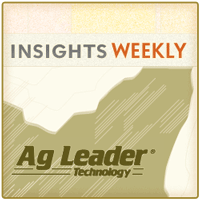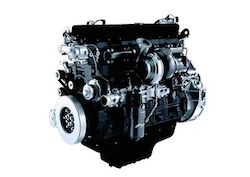 The Environmental Protection Agency’s proposed Clean Water Act rule is rife with errors, lacks transparency and would greatly expand strict federal control over land that was previously not regulated by the federal government, according to a report by economist and University of California-Berkley faculty member Dr. David Sunding.
The Environmental Protection Agency’s proposed Clean Water Act rule is rife with errors, lacks transparency and would greatly expand strict federal control over land that was previously not regulated by the federal government, according to a report by economist and University of California-Berkley faculty member Dr. David Sunding.
Sunding’s report, Review of 2014 EPA Economic Analysis of Proposed Revised Definition of Waters of the Unites States, raises the blinds on the controversial proposal by detailing how EPA failed to provide a realistic explanation of the scope, costs and benefits of the rule.
The proposed EPA rule represents an expansion of the “Waters of the United States” to include waters such as small, isolated wetlands, ephemeral drains and many ditches. In the proposed rule’s economic analysis, the EPA systematically underestimated the impact on affected communities and businesses, according to the report.
Sunding documents how EPA excluded costs, under-represented jurisdictional areas and used flawed methods to arrive at much lower economic costs of the proposed rule. Sunding’s report also notes that the lack of transparency in the report makes it difficult to understand or replicate EPA’s calculations, examine the agency’s assumptions or understand discrepancies in its results.
Sunding has concluded that the errors in the EPA’s analysis are so extensive as to render it useless for determining the true costs of this proposed rule. His report underscores the need for EPA to withdraw the rule and complete a comprehensive and transparent economic review.
“The EPA’s proposed waters of the U.S. rule is irreparably flawed from an economic standpoint,” said American Farm Bureau Federation President Bob Stallman. “The rule is also an end run around Congress and two Supreme Court rulings, and in their official comments, farmers and ranchers across the national are calling on EPA to ditch the rule.”
This rule will also have a huge impact on communities and businesses across the country, according to Stallman. This proposed rule would impact everything from local governments trying to start or expand infrastructure projects to community gardens.
“The rule will dictate land use across the United States,” Stallman said. “And EPA has not been forthright about the costs to our communities and businesses, including countless small businesses.”
Dr. Sunding prepared this report with support from the Waters Advocacy Coalition, which represents Americans involved in construction, real estate, mining, agriculture, wildlife conservation, forestry, manufacturing and energy. As a member of the coalition, AFBF will continue to push for a better rule that balances the needs of affected communities with protections for our nation’s waters.
The American Farm Bureau Federation’s “Ditch the Rule” website shares more on this pressing topic.
 The Illinois Corn Growers Association and Illinois Renewable Fuels are supporting legislation that would allow consumers more choice at the fuel pump.
The Illinois Corn Growers Association and Illinois Renewable Fuels are supporting legislation that would allow consumers more choice at the fuel pump. Renewable Fuels Association president and CEO Bob Dinneen was recently on WFMB’s local morning show AM Springfield with Sam Madonia to discuss the legislation. I thought that conversation and the follow-up comments were interesting enough to bring them to you here on this Hick Chick Chat. What do you think?
Renewable Fuels Association president and CEO Bob Dinneen was recently on WFMB’s local morning show AM Springfield with Sam Madonia to discuss the legislation. I thought that conversation and the follow-up comments were interesting enough to bring them to you here on this Hick Chick Chat. What do you think? 
 Last week, we discussed utilizing your precision ag data while crop scouting. While it’s important to have access to that reference data in the field, you may ask yourself how can I use GPS technology to precisely and more efficiently record crop and pest observations? Or how can I precisely map and integrate my crop sensor readings into precision scouting software? How can I create custom tailored scouting reports and securely archive scouting data?
Last week, we discussed utilizing your precision ag data while crop scouting. While it’s important to have access to that reference data in the field, you may ask yourself how can I use GPS technology to precisely and more efficiently record crop and pest observations? Or how can I precisely map and integrate my crop sensor readings into precision scouting software? How can I create custom tailored scouting reports and securely archive scouting data?






